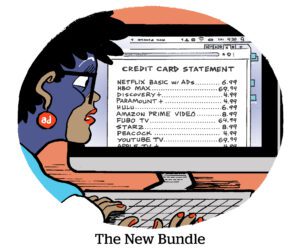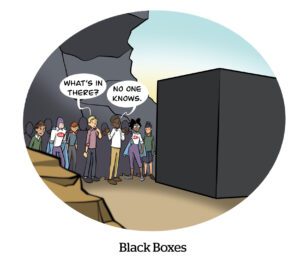Here’s today’s AdExchanger.com news round-up… Want it by email? Sign up here.
The Performance Power Play
Apple is following the owned-and-operated advertising playbook written by Google and adopted by Meta, not to mention Amazon and Microsoft.
For now, the resemblance comes down to how advertisers set campaigns and receive campaign reports. Rather than receiving hands-on campaign controls, advertisers will provide their budgets and cost-per-acquisition targets, as well as target demos or countries, and Apple’s algorithm controls the media placements, Business Insider reports.
Apple’s version is limited by its own relatively narrow field of inventory. Google’s PMax spans the web, YouTube, YouTube TV, Gmail, Maps, product listings, Chrome log-ins and more. Meta has Facebook, Instagram, WhatsApp, the audience network and shopping campaigns.
Apple has the “Today” tab when you open the App Store and “you might also like” prompts on other app download pages.
Apple was always likely to adopt the black box model for its ad platform. Google, Meta and the other platforms created products like PMax in response to privacy rules set by Apple. When the media seller and ad tech system are owned by the same company, both have first-party data rights, so tracking and targeting are allowed.
A Bumper Crop Of Fake Clicks
A picture is worth a thousand words, and a click farm is worth millions (and millions) of fake engagements.
Last year, British photographer Jack Latham traveled to Vietnamese bot farms on the outskirts of Hanoi. Although a bot farm’s primary enterprise is to fraudulently inflate online engagement metrics, the farms that Latham visited looked not unlike Silicon Valley startups, he tells CNN.
“There was a tremendous amount of hardware … whole walls of phones,” Latham says, and the vibe was not that of a criminal operation but rather of people, mostly in their 20s and 30s, clocking in to a job.
But that job just so happens to be manipulating social media algorithms, sometimes with dire consequences. Click farms are often used to amplify fake news and spread disinformation during elections.
Most of the click farmers Latham spoke with advertise their services online for less than one penny per click, view or interaction. The average salary in Vietnam is less than $1,000 per month.
“It only takes one person to control large amounts of phones,” Latham says. “One person can very quickly [do the work of] 10,000.”
Cold Storage
The Atlantic’s meme correspondent Charlie Warzel pens an essay about his out-of-control cloud storage and mounting data costs.
Maybe digital storage capacity is a niche concern. Most people are fine with the 200 GB of paid data storage they can get from Google and Apple – plus a side pot with Dropbox … oh, and the physical storage drives they keep in a shoebox somewhere.
But the data storage problem is related to mar tech because the consumer trend is mirrored by B2B.
Once people are good and settled on these platforms – like Google Photos and Apple Cloud – they can’t easily switch. Warzel dreads dropping one cloud package and losing digital memories.
Businesses also find themselves with ever-increasing monthly storage bills they didn’t know about or need, as well as other bills for things they do need and are thus scared to touch or move.
“There’s a cyclical nature to data glut,” Warzel writes. “Tech companies keep providing us with wonderful, useful communication and documentation tools, which we then use to generate a lot of data, and which tech companies then offer convenient subscription tiers to support.”
But Wait, There’s More!
X (aka Twitter) is launching a YouTube clone for smart TVs, starting with Amazon and Samsung. [Fortune]
Streaming subscriber churn is on an upward trend. [Marketing Brew]
Marketers are undeterred by TikTok’s uncertain future. [Digiday]
Speaking of which, former Activision CEO Bobby Kotick floats the idea of buying TikTok. [WSJ]
Are we watching the internet die? [Where’s Your Ed At?]
You’re Hired!
R3 names Ishan Chatterjee as its VP of global growth. [release]














